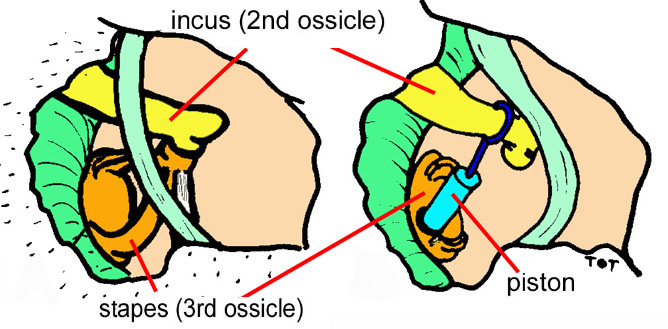Stapedotomy
An embryonic remnant in the ear, can sometimes carry on producing fresh bone after birth, even in adulthood. This abnormal bone disturbs the mobility of the ossicles behind the eardrum, and results in hearing loss, in a disease named Otosclerosis.
The ossicle which is affected by the abnormal bone of otosclerosis is the third in the chain, namely the stapes. During the operation, a part of the stapes is removed and a 0,8 mm hole is opened in its base. A small piston made of platinum and titanium is fitted in the hole and transmits the sound waves to the inner ear, bypassing the blocked stapes.
The operation lasts for about an hour. Postoperatively there is no pain, but there may be some unsteadiness or mild dizziness, which lasts for a few days and is easily controlled with drugs. The patient is discharged home on the first postoperative day. Hearing is usually improved dramatically after the healing period and continues improving for the first postoperative year. Success rates for this operation exceed 95%. Nevertheless, there is a small chance (less than 2%) of hearing deterioration due to a reaction of the inner ear to operative manipulations, which is always discussed with the patient preoperatively.
